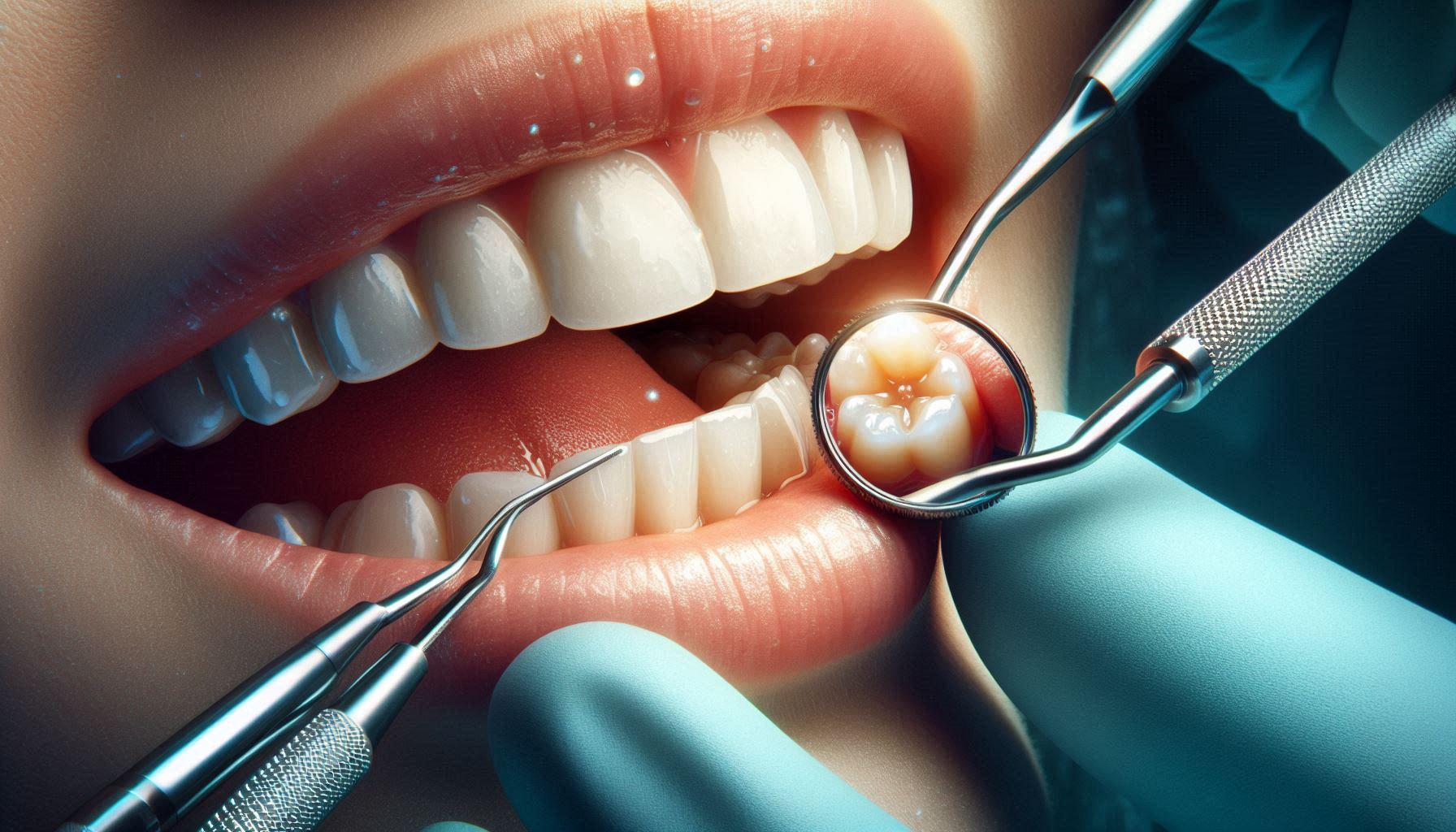When we think about heart disease, we often imagine the more obvious risk factors: high cholesterol, smoking, sedentary lifestyle, and poor diet. What many people don’t realize is that your gums—those soft tissues in your mouth—could also be providing a clue to your cardiovascular health. It’s a connection that’s become clearer over the past couple of decades, with research linking gum disease (particularly periodontal disease) to a higher risk of heart disease.
Gum health may seem like a separate issue from the health of your heart, but studies have shown that the two are more closely connected than we once thought. In fact, people with periodontal disease are more likely to have atherosclerosis, which is the narrowing and hardening of the arteries that can lead to heart attacks and strokes. But how do these two seemingly unrelated parts of the body connect?
The answer lies in inflammation and the bacteria that live in your mouth. Gum disease is an inflammatory condition, and inflammation is a key player in the development of heart disease. The bacteria from an unhealthy mouth can travel through the bloodstream, triggering inflammation and contributing to the buildup of fatty plaques in arteries. Over time, these plaques can narrow the arteries, reducing blood flow and increasing the risk of a cardiovascular event.
It’s important to note that while gum disease doesn’t cause heart disease, it can be a significant contributing factor. It acts as a risk factor for heart disease, similar to other conditions like high blood pressure or diabetes. But here’s the good news: improving your gum health can also help improve your heart health. By taking care of your teeth and gums, you may lower your risk for heart disease and stroke, making this a simple yet powerful way to protect your cardiovascular health.
Understanding Gum Health
What is Gum Health?
Gum health refers to the condition of the tissues that surround and support your teeth. Healthy gums are firm, pink, and resilient. They help anchor your teeth in place and protect the roots of your teeth from infection. When gums are healthy, they form a tight seal around the teeth, preventing bacteria from entering below the surface.
Gum disease, on the other hand, occurs when the tissues become infected, inflamed, or damaged. The most common forms of gum disease are gingivitis (mild inflammation of the gums) and periodontitis (a more severe form of gum disease that affects the underlying bone and tissues supporting the teeth).
The Role of Gums in Oral and Overall Health
Gum health is often an indicator of overall health. The mouth is home to millions of bacteria, and while many of these are harmless, others can cause infections that lead to gum disease. Healthy gums prevent these bacteria from penetrating into the bloodstream, but when gums are inflamed or infected, bacteria can easily spread, not only leading to oral problems but potentially affecting other parts of the body, including the heart.
In addition to its role in keeping your teeth in place, healthy gum tissue supports the rest of your oral health, making it essential to maintain. When gums become swollen, bleed, or recede, these symptoms can be early signs of a more serious problem.
Common Gum Diseases: Gingivitis and Periodontitis
- Gingivitis is the earliest stage of gum disease. It’s characterized by red, swollen gums that may bleed when you brush or floss. Gingivitis is often caused by plaque buildup along the gumline. The good news is that gingivitis is reversible with proper oral hygiene.
- Periodontitis is a more severe form of gum disease that occurs when gingivitis is left untreated. It affects the deeper tissues and bones that support the teeth, causing the gums to pull away from the teeth, leading to pockets of infection. This form of gum disease is irreversible but manageable with professional treatment.
The Science Behind Gum Disease and Heart Disease
How Gum Disease Affects the Cardiovascular System
The link between gum disease and heart disease isn’t just coincidental. There are multiple pathways through which gum disease can increase the risk of cardiovascular issues. The primary mechanism appears to be inflammation.
When gums are infected, the body triggers an immune response. White blood cells and other inflammatory markers are sent to the area to fight the infection. While this is a natural and beneficial response, the chronic inflammation caused by ongoing gum disease can have systemic effects. Studies have shown that chronic inflammation in the gums can increase the levels of C-reactive protein (CRP) in the bloodstream, a marker of inflammation that is also associated with a higher risk of heart disease.
The Role of Inflammation in Both Conditions
Inflammation is at the heart of both gum disease and heart disease. In gum disease, bacteria in the mouth trigger the immune system, leading to local inflammation in the gums. In the case of heart disease, inflammation can cause damage to the blood vessels, making it easier for cholesterol to accumulate and form plaques. Over time, this plaque can harden and narrow the arteries, a condition known as atherosclerosis.
Inflammation in the gums can also contribute to the formation of blood clots, which may lead to heart attacks or strokes. Essentially, the presence of gum disease may act as a “silent” contributor to cardiovascular risk, making it a significant factor in overall health assessments.
Research Studies Linking Gum Disease and Heart Health
A wealth of research has established the connection between gum disease and heart disease. One of the most significant studies published by the American Heart Association found that people with periodontal disease were almost twice as likely to suffer from coronary artery disease as those without gum disease.
Other studies have shown that the treatment of gum disease may help reduce the risk of heart disease. For instance, a study published in the Journal of Periodontology found that treating gum infections in individuals with heart disease led to significant reductions in biomarkers associated with inflammation and heart disease risk.
The Pathophysiology: How Gum Disease Can Lead to Heart Disease
Bacteria from Gums Entering the Bloodstream
Gum disease creates a pathway for harmful bacteria to enter the bloodstream. When gums are inflamed or infected, the tissues break down, allowing bacteria to enter the bloodstream through tiny openings (called gingival crevices). Once in the bloodstream, these bacteria can travel to various organs, including the heart. This is particularly concerning because certain types of bacteria that are commonly found in infected gums can directly affect blood vessels, causing them to become inflamed and stiff.
Inflammation’s Impact on Blood Vessels and the Heart
Chronic inflammation due to gum disease can trigger systemic inflammatory responses, leading to damage in blood vessels. This damage promotes the buildup of fatty plaque on the inner walls of arteries, causing atherosclerosis. As the plaque builds up, it can narrow and harden the arteries, restricting blood flow and increasing the risk of high blood pressure, heart attacks, and strokes.
Plaque Buildup and Atherosclerosis
The plaque that accumulates in the arteries due to inflammation isn’t just a passive deposit of cholesterol and fat. It’s a dynamic mixture of fat, cholesterol, immune cells, and other substances. This plaque can harden, making the arteries less flexible, and in some cases, it can rupture, leading to a blood clot. A blood clot in a coronary artery can block the flow of oxygen-rich blood to the heart, triggering a heart attack.
Risk Factors for Gum Disease and Heart Disease
Common Risk Factors: Age, Diet, Smoking, etc.
Many of the same risk factors that contribute to gum disease also contribute to heart disease. These include:
- Age: As people get older, they are at greater risk for both gum disease and cardiovascular issues.
- Diet: A diet high in sugars and processed foods can contribute to both gum disease and heart disease by promoting inflammation and plaque buildup.
- Smoking: Smoking is a significant risk factor for both gum disease and heart disease. It weakens the immune system and makes it harder for the body to fight infections in the gums.
- Poor Oral Hygiene: Inadequate brushing and flossing can lead to the accumulation of plaque and bacteria that cause gum disease.
Genetic Predispositions
Some individuals are genetically predisposed to both gum disease and heart disease. Genetic factors can influence the body’s inflammatory response, making some people more susceptible to chronic inflammation and its effects on both oral and cardiovascular health.
How Lifestyle Affects Both Conditions
Healthy lifestyle choices, such as eating a balanced diet, exercising regularly, and not smoking, can significantly reduce the risk of both gum disease and heart disease. In contrast, a sedentary lifestyle, poor diet, and smoking increase the risk of developing both conditions.
Symptoms and Warning Signs
How to Identify Gum Disease Early
Early symptoms of gum disease include:
- Red, swollen, or bleeding gums
- Persistent bad breath
- Receding gums or teeth that appear longer than before
- Pain when chewing or brushing
- Pockets or gaps between teeth and gums
If you notice any of these symptoms, it’s essential to seek treatment from a dentist or periodontist.
Warning Signs of Heart Disease Related to Gum Health
While gum disease doesn’t directly cause heart disease, signs of cardiovascular problems can sometimes manifest through oral health issues. For instance, gum abscesses, swollen gums, or tooth loss may be early indicators of systemic health problems, including heart disease.
The Importance of Early Detection
Both gum disease and heart disease are more treatable and manageable when caught early. Routine dental checkups are vital for identifying signs of gum disease, and regular medical exams can help detect heart disease risk factors before they progress into severe conditions.
Preventive Measures: How to Protect Your Gums and Heart
Best Practices for Oral Hygiene
Good oral hygiene is the cornerstone of gum health. This includes:
- Brushing your teeth at least twice a day
- Flossing daily to remove plaque and food particles between teeth
- Using mouthwash to help reduce bacteria
- Regular dental checkups every 6-12 months
The Role of Diet in Maintaining Gum Health and Cardiovascular Health
A balanced diet rich in fruits, vegetables, whole grains, lean proteins, and healthy fats can help reduce the risk of both gum disease and heart disease. Avoid excessive sugar and processed foods, which can promote inflammation and plaque buildup.
Quitting Smoking: A Dual Benefit for Gums and Heart
Quitting smoking is one of the best things you can do for both your gums and heart. Smoking weakens the immune system, making it harder for your body to fight infections in the gums, while also promoting the buildup of plaque in the arteries.
Regular Checkups: Why Dentists and Cardiologists Should Work Together
Regular checkups with both a dentist and a cardiologist are essential. Dentists can spot early signs of gum disease, while cardiologists can help manage heart disease risk factors. If you have a history of gum disease, it’s important to discuss it with your cardiologist, as it may influence your cardiovascular health.
Treatment Options
Treating Gum Disease
Treatment for gum disease depends on the severity. In mild cases, scaling and root planing can help remove plaque and tartar buildup. In more severe cases, surgical options like gum grafts or flap surgery may be needed.
Managing Heart Disease Risk Factors
Managing heart disease involves a combination of medication and lifestyle changes, including diet, exercise, and stress management. Medications like statins may be prescribed to lower cholesterol, while blood pressure medications may help keep hypertension in check.
Collaborative Care Between Dentists and Cardiologists
Since gum disease and heart disease are interconnected, working with both your dentist and cardiologist can ensure a more holistic approach to managing your health. Regular communication between these healthcare providers can help you take the necessary steps to minimize risk.
The Latest Research and Innovations
Advancements in both the understanding of the link between gum disease and heart disease, and the treatments for both conditions, are happening regularly. Researchers are working on developing better diagnostic tools to identify people at risk of both conditions and innovative treatments to reduce inflammation and improve overall health outcomes.
Conclusion
The connection between your smile and your heart is stronger than you might have realized. Gum disease and heart disease are both chronic inflammatory conditions that share many of the same risk factors. While gum disease doesn’t directly cause heart disease, it can act as a warning sign, providing a clue to your overall health.
The good news is that both conditions are preventable and manageable. By practicing good oral hygiene, eating a healthy diet, quitting smoking, and regularly visiting your healthcare providers, you can protect both your gums and your heart. A healthy mouth is not just about looking good or feeling comfortable; it’s a reflection of your overall health, with your heart at the center of it all.
By understanding the connection between gum health and heart health, you can take proactive steps to protect both. After all, a healthy smile may just be the key to a healthier heart.
SOURCES
Hajishengallis, G. (2015). Periodontitis: From microbial immune subversion to systemic inflammation. Nature Reviews Immunology, 15(1), 30-44.
Beck, J. D., & Offenbacher, S. (2005). Oral health and cardiovascular disease: Epidemiology and mechanisms. Periodontology 2000, 38, 49-60.
Dietrich, T., Webb, I. A., & Turner, W. (2013). The relationship between periodontitis and cardiovascular disease: An overview of the current evidence. European Heart Journal, 34(15), 1351-1361.
Pihlstrom, B. L., Michalowicz, B. S., & Johnson, N. W. (2005). Periodontal diseases. Lancet, 366(9499), 1809-1820.
Kumar, P. S., & Scannapieco, F. A. (2007). Periodontal disease and systemic conditions: A bidirectional relationship. Journal of Periodontology, 78(5), 813-822.
Desvarieux, M., Demmer, R. T., & Rundek, T. (2013). Periodontal disease and carotid artery atherosclerosis: The Oral Infections and Vascular Disease Epidemiology Study (INVEST). Circulation, 125(3), 400-408.
Kuan, M. S., & Lee, K. H. (2014). Chronic periodontal disease and the risk of cardiovascular disease. The American Journal of Medicine, 127(4), 287-296.
Löe, H. (2000). Oral hygiene in the prevention of periodontal disease. Journal of Periodontology, 71(9), 1469-1476.
Wang, H. L., & Cueto, H. (2006). The association between periodontal disease and cardiovascular disease: A review. Journal of Clinical Periodontology, 33(5), 268-272.
Genco, R. J. (2012). Host responses in periodontal diseases: Current concepts. Periodontology 2000, 60(1), 16-28.
Lockhart, P. B., & Bolger, A. F. (2012). Periodontal disease and atherosclerotic vascular disease: Does the evidence support an association? American Heart Journal, 163(4), 450-459.
Noble, J. M., & Schenkein, H. A. (2009). Inflammation and cardiovascular disease: The role of periodontal infections. Journal of Periodontology, 80(4), 554-568.
HISTORY
Current Version
March 28, 2025
Written By:
SUMMIYAH MAHMOOD




